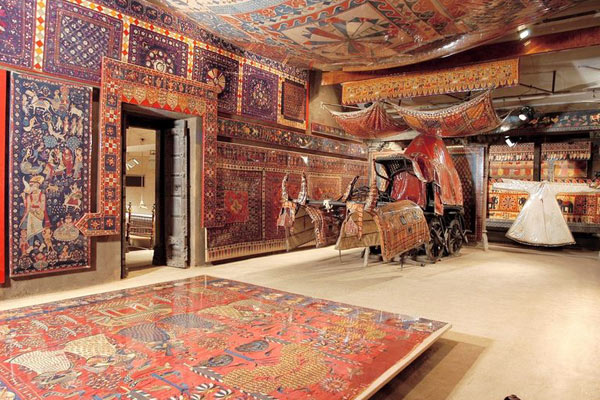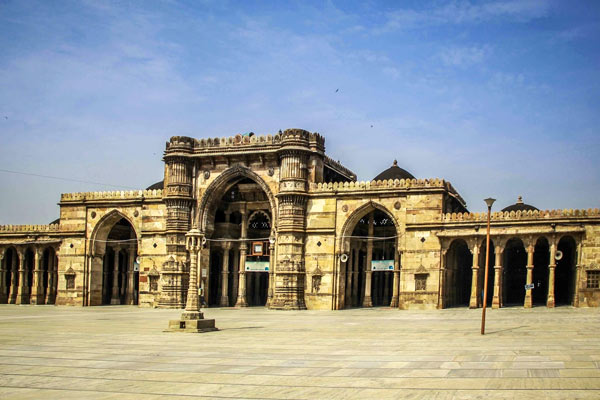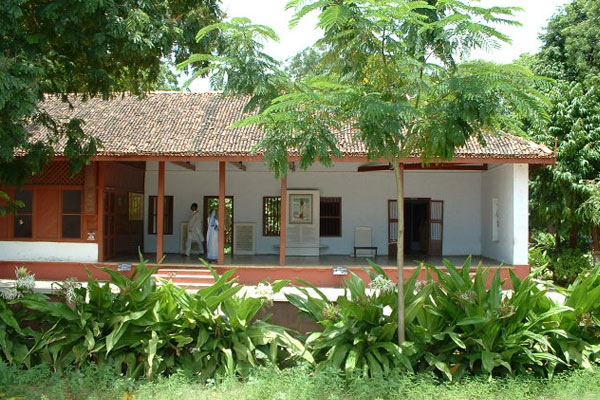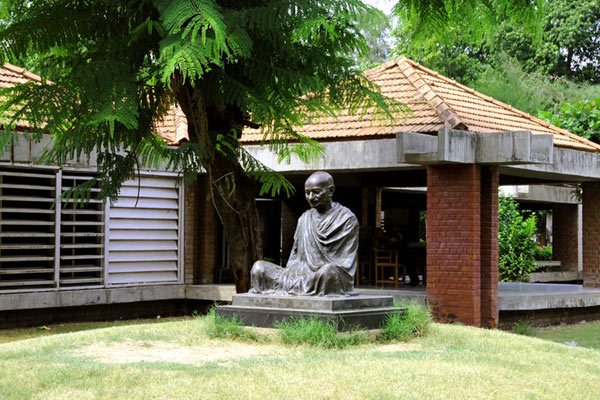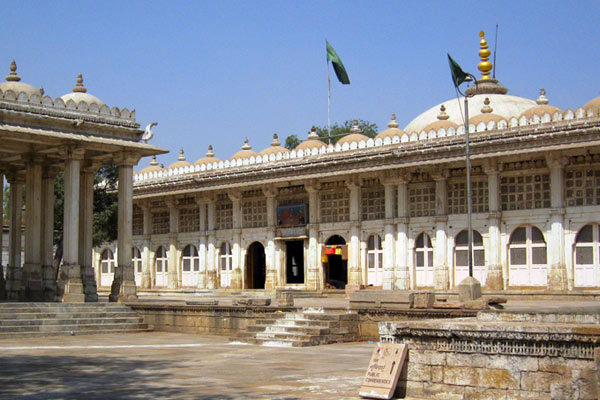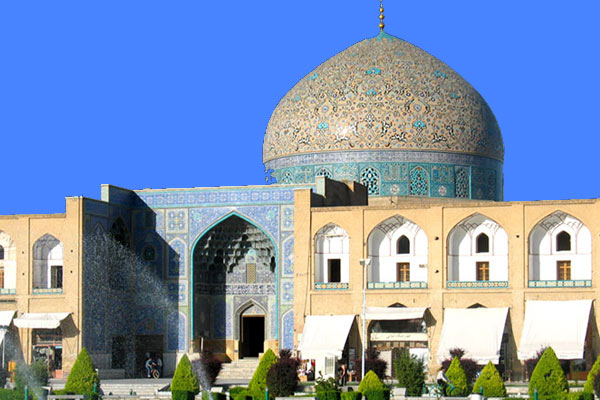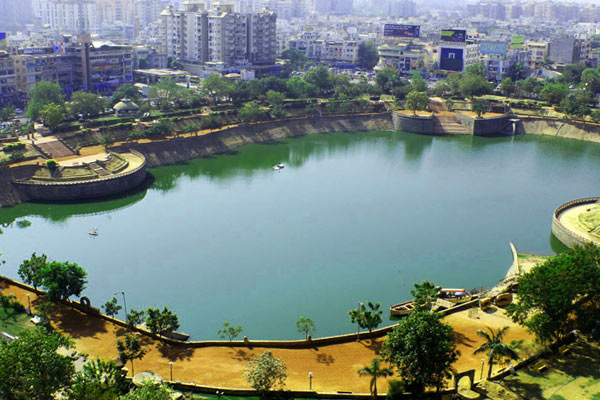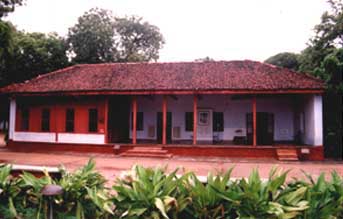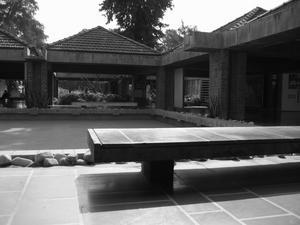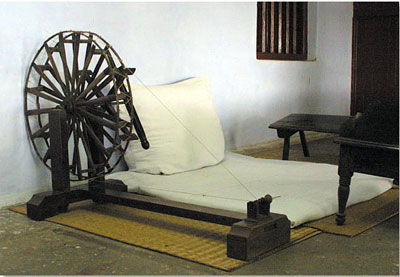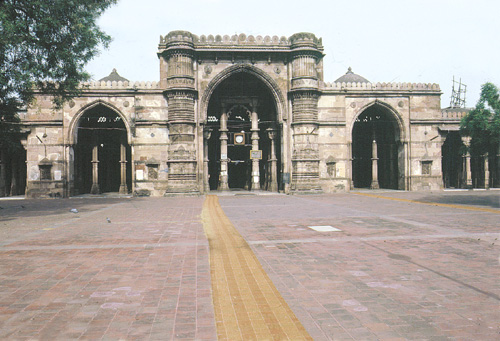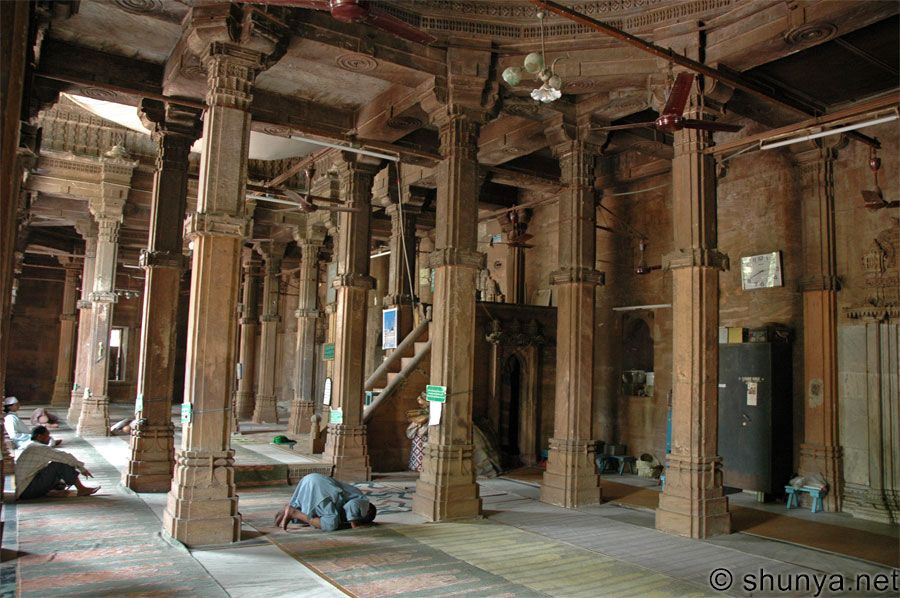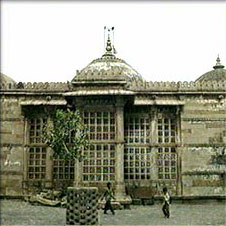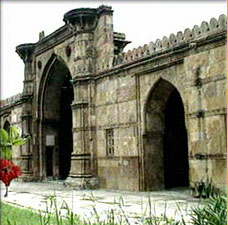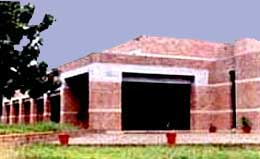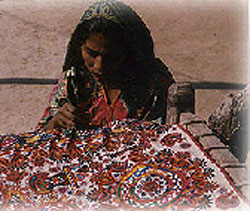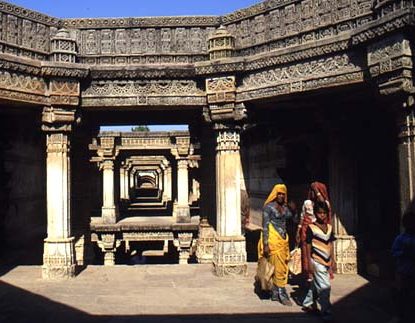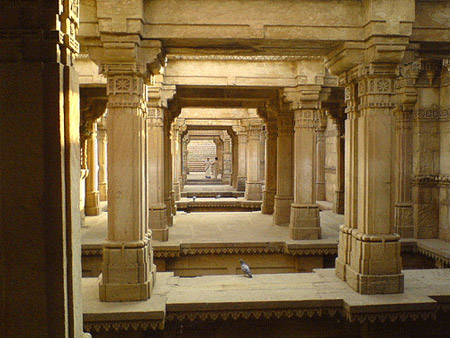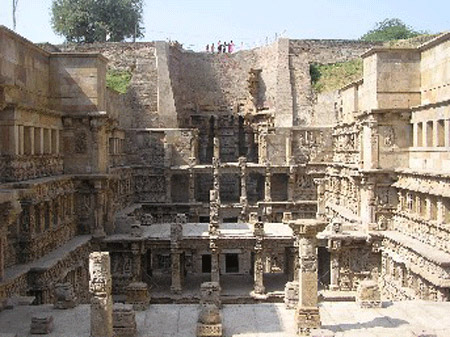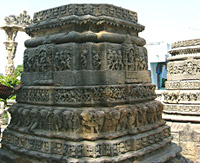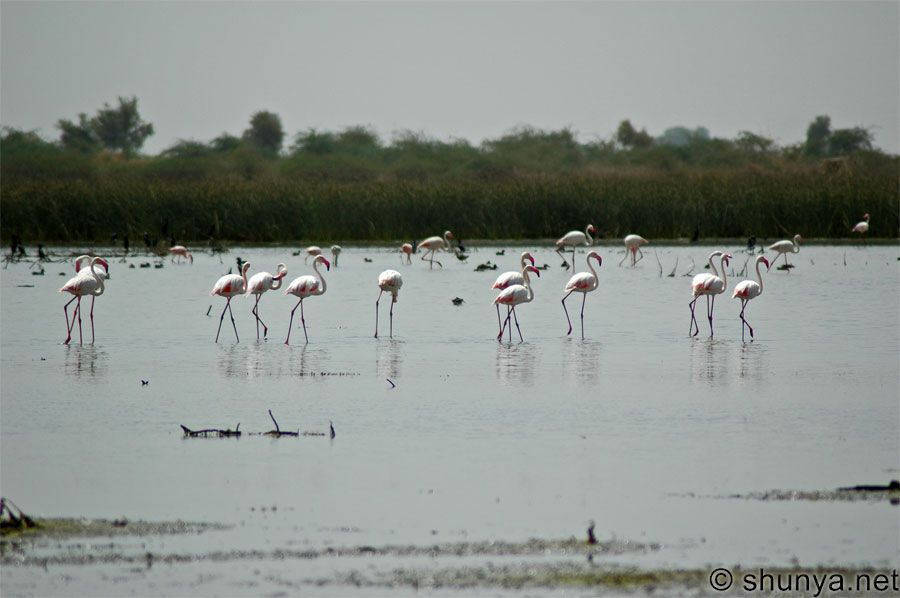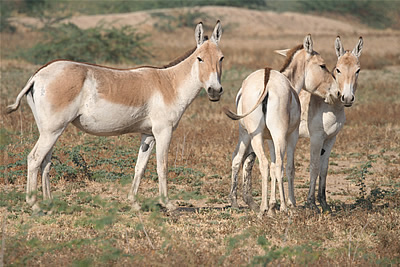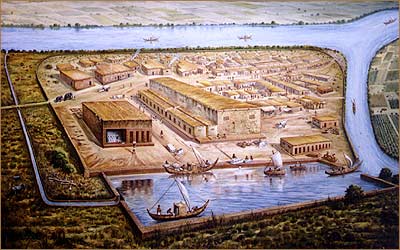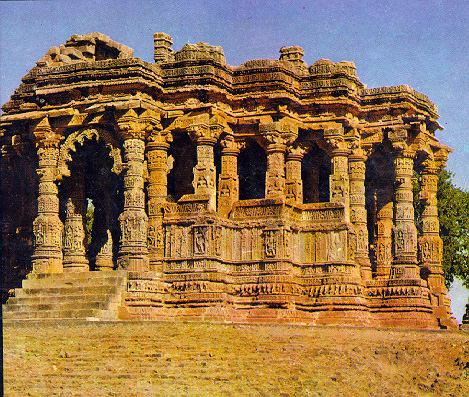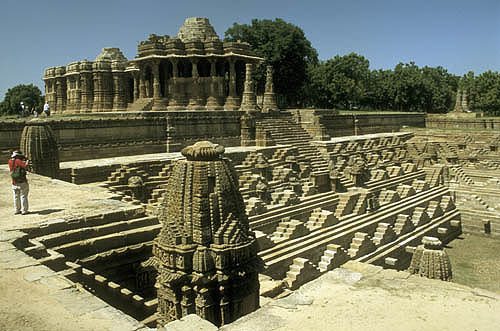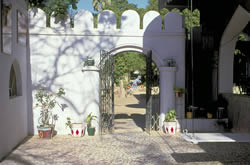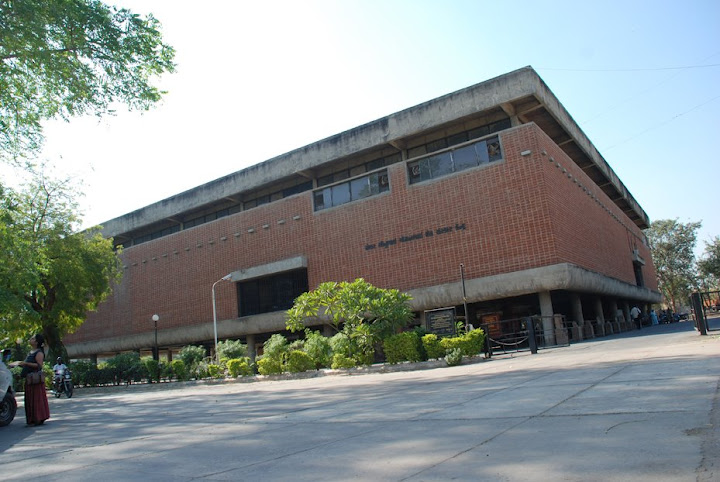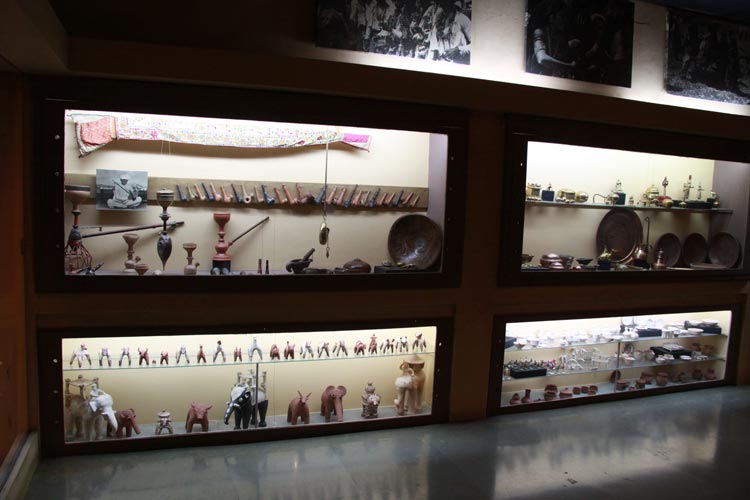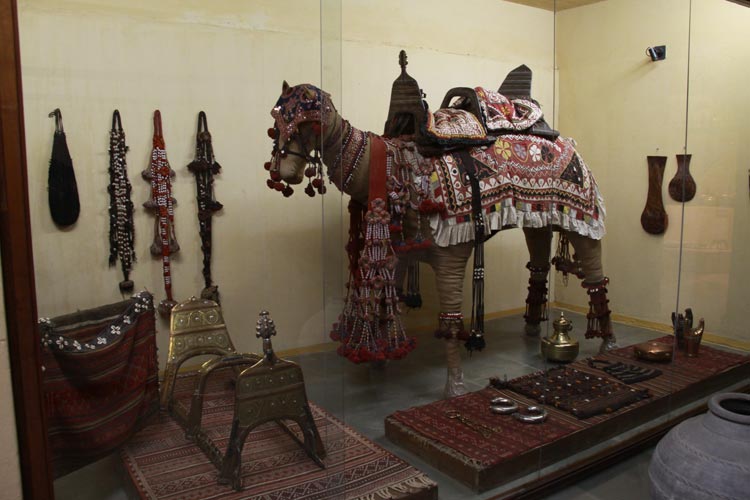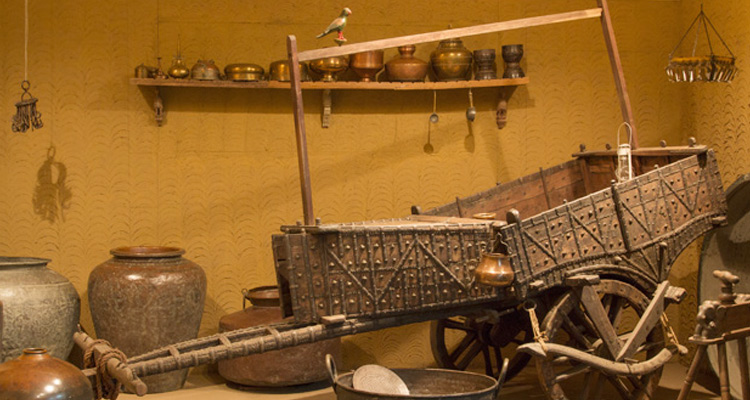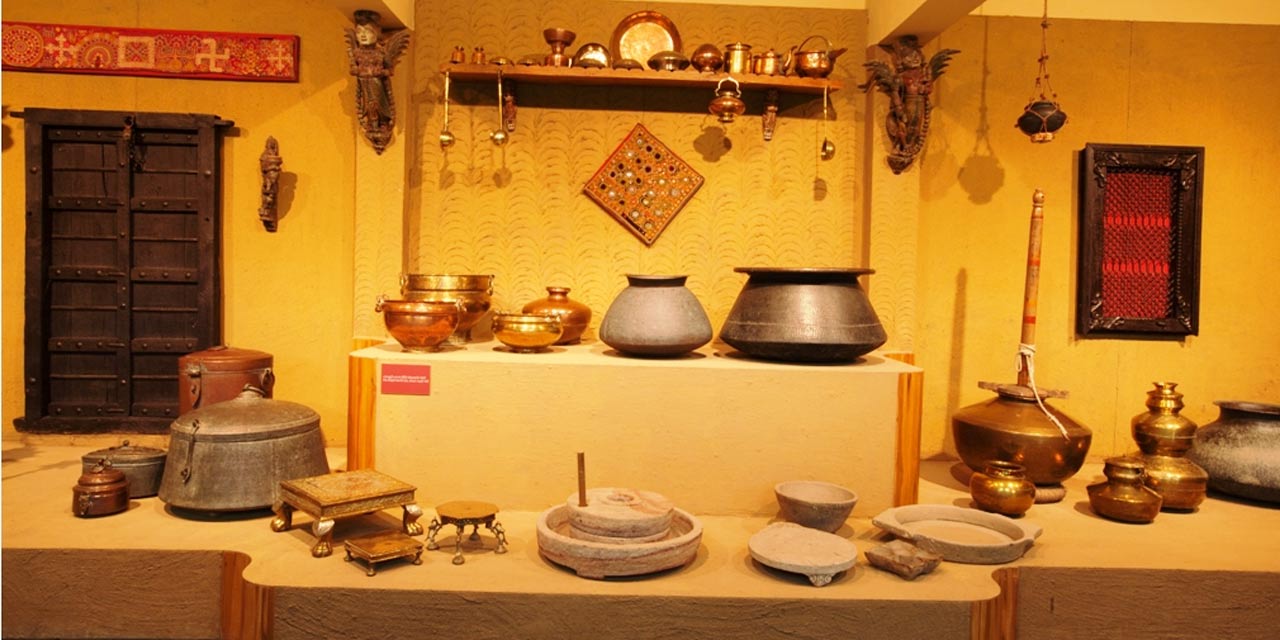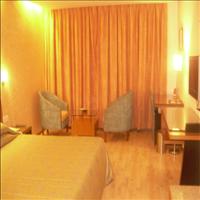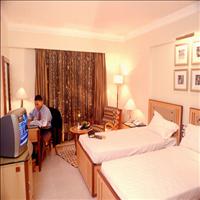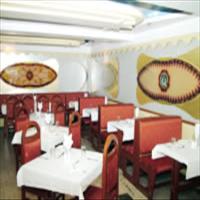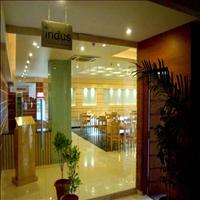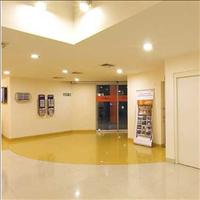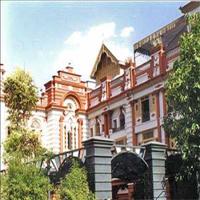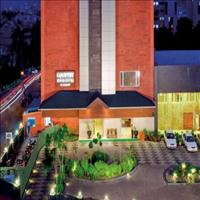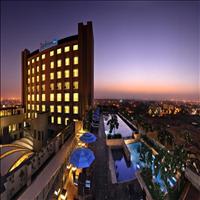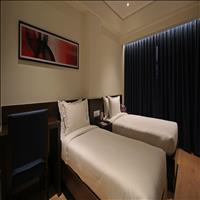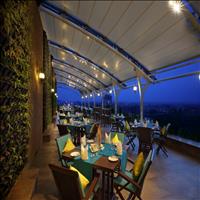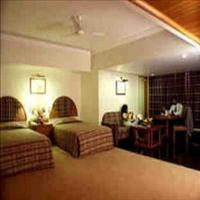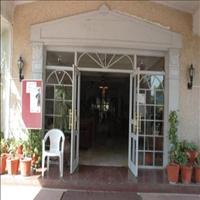Ahmedabad
The actual capital of Gujarat
General Information
Other Name: Ahemedabad, Ahmadabad, District: Ahmedabad, State: Gujarat, India
Area: 220 Sq. Km.
Languages Spoken: Gujarati, English and Hindi
Long Distance Code: +91-79
Importance: Mahatma Gandhi's Sabarmati Ashram
Best Time to Visit: September to February
International Access: Sardar Vallabhbhai Patel International Airport, Ahmedabad
Description
Quite often the prominence given to this city is mistaken for the city being the state capital. But it is not. Although it was the capital of the Gujarat state for a short span of time after the reunion of the Gujarat state in 1960, the actual capital, Gandhinagar, is just at stone's throw distance form Ahemedabad. Ahemedabad blends harmoniously an ancient heritage with a vibrant present. The city's prosperous and eventful past and present is embodied in its rich kaleidoscope of history, art and culture, rich architecture and imposing monuments.<br />A major industrial city of India, Ahemedabad ad is famous for its exquisite handicraft items and Bandhej Textiles. It is famous for its beautiful Indo-Saracenic architectural structures and more recently for the devastating earthquake. The educational institutions of Ahemedabad are like the Indian Institute of management, and the National Institute of Design are supposed to be one of the best in the country.<br />The city derives its name from the founder of the city Ahemed Shah, who built it as his capital in 1411 A.D. Although the Mughal Emperor Jehangir called it as the city of dust; Gardabad, it was known as one of the finest cities of India by the 17th century. Ahemedabad, rather the whole of Gujarat, has been the melting pot of various tribes, therefore the people of Gujarat and mainly Ahemedabad as it has been the capital for many years, have been a mixture of various creeds, tribes and castes. The e Aryans came and also came, the Persians, Arabs and the Africans. This mixture of cultures though has not deviated the Gujarati from their food habbits and language. <br />Ahemedabad truly is a visitor's delight. Right from historical monuments to the recent developments, from relic past to futuristic approach, one can find everything here. To top on that are the beautiful jewellery designs and lip smacking food that Ahemedabad offers.Location
Aptly located in the middle of this huge western state of India, the district of Ahemedabad is surrounded by the districts of Anand, Bhavanagar, Gandhinagar, Surendranagar, Mehasana and Kheda district. A small tip of Ahemedabad extends in to the creek to join the Arabian Sea. Ahemedabad is seismically active zone.<br />Being centrally located in the state of Gujarat, Ahemedabad, experiences extreme climates. It is very hot during summers and quite cool in winters.
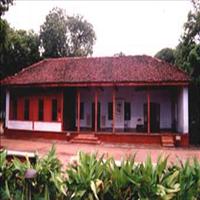 Mahatma Gandhi, the great saint of the Indian Freedom Struggle, decided to launch the freedom movement of Gujarat from this very place. Situated on peaceful stretch of the River Sabarmati, this was also the place where Gandhiji lived during the long struggle for freedom. The ashram is set up in most simple manner and is kept in the same tradition as was Gandhiji's living style. It still produces handicraft items and the small room with basic amenities, where the great man stayed has been converted into a small museum depicting important events of his life.
Mahatma Gandhi, the great saint of the Indian Freedom Struggle, decided to launch the freedom movement of Gujarat from this very place. Situated on peaceful stretch of the River Sabarmati, this was also the place where Gandhiji lived during the long struggle for freedom. The ashram is set up in most simple manner and is kept in the same tradition as was Gandhiji's living style. It still produces handicraft items and the small room with basic amenities, where the great man stayed has been converted into a small museum depicting important events of his life.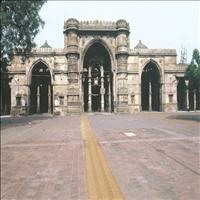 The Ahemed Shah's Mosque was built in 1414 A.D. by the founder of the city, Ahemed Shah. One of the earliest mosques of the city, it is to the south-west of the Bhadra Fort, named after the Hindu goddess, Kali. The front of the mosque is now a garden. Named after the Hindu wife of Sultan Mohammad Beghara. The Rani Raupamati's Mosque was built in between 1430 to 1440 A. D. The mosque has richly carved minarets, balcony windows and perforated stone lattices. Its three domes are linked together by a flat roof. As with so many of Ahemedabad's early mosques, this one displays elements of both Hindu and Islamic design. Nearly every town and city with Islamic influence has a Jama Masjid. But The Jama Masjid of Ahemedabad is considered to be he most beautiful mosque of the east. It was build by Ahmad Shah in 1423 and is the principal mosque of the Islamic era situated in the centre of the city near Three Gates (Tran Darwaja). Built in Indo- Saracenic architectural style, it has 260 pillars supporting 15 domes arranged symmetrically. A special feature of the mosque is the Muluk-Khana, or the Royal Gallery, which is a platform standing on pillars and enclosed up to the roof with beautiful stone work. The Sidi Bashir Mosque is famed for its shaking minarets. This is a pair of minarets and is said that when one minaret is shaken, the other rocks in sympathy. The architecture was designed so to protect the monument against the earth quakes but even today the crucial mechanism that causes the vibration is still a mystery.\r\nThe Mosque of Siddi Saiyyed, near Lal Darwaja is world famous for its magnificent stone tracery. The tracery is acclaimed for its splendid carved net screen of ten semi-circular windows. This unique architecture was built by the so called slave of Ahemed Shah, Siddi Sayyed in the mid 16th century. The mosque is the best example of the Indo Saracenic architecture with delicate carvings which transform stones into filigree. The models in miniatures of this splendid structure are best to carry as souvenirs from the city.
The Ahemed Shah's Mosque was built in 1414 A.D. by the founder of the city, Ahemed Shah. One of the earliest mosques of the city, it is to the south-west of the Bhadra Fort, named after the Hindu goddess, Kali. The front of the mosque is now a garden. Named after the Hindu wife of Sultan Mohammad Beghara. The Rani Raupamati's Mosque was built in between 1430 to 1440 A. D. The mosque has richly carved minarets, balcony windows and perforated stone lattices. Its three domes are linked together by a flat roof. As with so many of Ahemedabad's early mosques, this one displays elements of both Hindu and Islamic design. Nearly every town and city with Islamic influence has a Jama Masjid. But The Jama Masjid of Ahemedabad is considered to be he most beautiful mosque of the east. It was build by Ahmad Shah in 1423 and is the principal mosque of the Islamic era situated in the centre of the city near Three Gates (Tran Darwaja). Built in Indo- Saracenic architectural style, it has 260 pillars supporting 15 domes arranged symmetrically. A special feature of the mosque is the Muluk-Khana, or the Royal Gallery, which is a platform standing on pillars and enclosed up to the roof with beautiful stone work. The Sidi Bashir Mosque is famed for its shaking minarets. This is a pair of minarets and is said that when one minaret is shaken, the other rocks in sympathy. The architecture was designed so to protect the monument against the earth quakes but even today the crucial mechanism that causes the vibration is still a mystery.\r\nThe Mosque of Siddi Saiyyed, near Lal Darwaja is world famous for its magnificent stone tracery. The tracery is acclaimed for its splendid carved net screen of ten semi-circular windows. This unique architecture was built by the so called slave of Ahemed Shah, Siddi Sayyed in the mid 16th century. The mosque is the best example of the Indo Saracenic architecture with delicate carvings which transform stones into filigree. The models in miniatures of this splendid structure are best to carry as souvenirs from the city.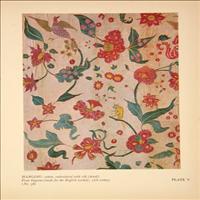 One of the rarest museums and also the best in the world, the Calico museum of Textiles, was inaugurated by the then Prime Minister, Jawaharlal Nehru, in 1948. It is the finest museum of textiles and has one of the richest Collection of Indian textiles covering all regions of India. Exhibits include a wide range of embroidered shamianas, wall hangings, costumes, saris and embroideries. There are exhibits from historic era and the impression that the art and craft had during that period is quite evident. Various kinds and various designs of textiles ranging from the 12th century and even earlier leaves one spell bound.
One of the rarest museums and also the best in the world, the Calico museum of Textiles, was inaugurated by the then Prime Minister, Jawaharlal Nehru, in 1948. It is the finest museum of textiles and has one of the richest Collection of Indian textiles covering all regions of India. Exhibits include a wide range of embroidered shamianas, wall hangings, costumes, saris and embroideries. There are exhibits from historic era and the impression that the art and craft had during that period is quite evident. Various kinds and various designs of textiles ranging from the 12th century and even earlier leaves one spell bound.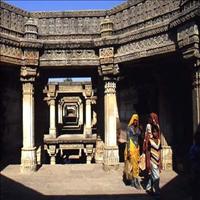 Besides mosques and tombs, the other most notable thing about the city are its step-wells (vav). The stepped well is one the finest example of Gujarati architecture. The main wells are reached through steps and all around them there are decoration of the columns, curved brackets and lintels, highly elaborate with repeated friezes and ornamentation of animal motifs and deities.\r\nThe Adalaj Step Well, located on outskirts of Ahemedabad, was built in 1499 A.D. by Ruda Rani, wife of Raja Virsing, a Vaghela Rajput. It has an entrance from three sides with open colonnades of increasing height and complexity rise over the staircase landings. Before the main well is reached, there is open octagonal surrounded by galleries on four levels with circular well at the bottom. The Dada Hari Vav was built in 1501. It has a flight of steps leading down to lower and lower platform terminating at a small, octagonal well. These wells are cool even on the hottest of the days and make a good resting places and providing drinking water for the weary travelers.
Besides mosques and tombs, the other most notable thing about the city are its step-wells (vav). The stepped well is one the finest example of Gujarati architecture. The main wells are reached through steps and all around them there are decoration of the columns, curved brackets and lintels, highly elaborate with repeated friezes and ornamentation of animal motifs and deities.\r\nThe Adalaj Step Well, located on outskirts of Ahemedabad, was built in 1499 A.D. by Ruda Rani, wife of Raja Virsing, a Vaghela Rajput. It has an entrance from three sides with open colonnades of increasing height and complexity rise over the staircase landings. Before the main well is reached, there is open octagonal surrounded by galleries on four levels with circular well at the bottom. The Dada Hari Vav was built in 1501. It has a flight of steps leading down to lower and lower platform terminating at a small, octagonal well. These wells are cool even on the hottest of the days and make a good resting places and providing drinking water for the weary travelers.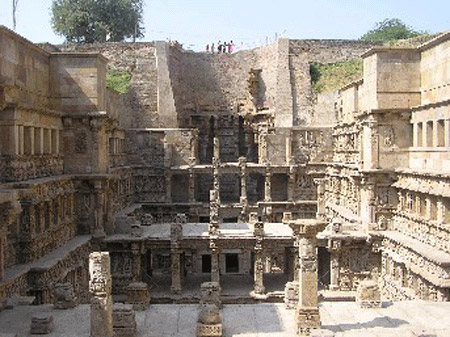 Patan is hardly 140 kms from Ahemedabad. This old capital of Gujarat, stands testimony to the most prosperous era during the Solanki or the Chalukya dynasty which prevailed for 600 years between 8th to the 14th century. The town has a mention in the ancient scriptures as well. Ravaged by time and plundered for religion and relics, the city now has very little of its earlier glory. Yet, what remains is sufficient to provide a glimpse of the past.\r\nThe Queen's Step well, Rani ni vav, is the stunning masterpiece of the skills of the artisans of the Solanki era. It was constructed by the mother of Karnadeva during the 11th century. Although built in the Khajuraho kind of architecture, it has no erotic sculptures. The well lay buried under the sand for ages which has preserved the images and is a must visit for any traveler.\r\nThe enchanting Sahastralinga Talav or tank of the thousand Shiva shrines was constructed in the early 12th century by Jayasimha Siddharaja. Spread over an area of 5 kms the place is must visit.\r\nThe Jain temples of Patan are said to be over a hundredin number. Largest among them is the one dedicated to Panchasara Parsvanatha. It has the best known white marble image of Vanaraja and contains valuable Jain manuscripts, some of which are written in the ink made of gold.
Patan is hardly 140 kms from Ahemedabad. This old capital of Gujarat, stands testimony to the most prosperous era during the Solanki or the Chalukya dynasty which prevailed for 600 years between 8th to the 14th century. The town has a mention in the ancient scriptures as well. Ravaged by time and plundered for religion and relics, the city now has very little of its earlier glory. Yet, what remains is sufficient to provide a glimpse of the past.\r\nThe Queen's Step well, Rani ni vav, is the stunning masterpiece of the skills of the artisans of the Solanki era. It was constructed by the mother of Karnadeva during the 11th century. Although built in the Khajuraho kind of architecture, it has no erotic sculptures. The well lay buried under the sand for ages which has preserved the images and is a must visit for any traveler.\r\nThe enchanting Sahastralinga Talav or tank of the thousand Shiva shrines was constructed in the early 12th century by Jayasimha Siddharaja. Spread over an area of 5 kms the place is must visit.\r\nThe Jain temples of Patan are said to be over a hundredin number. Largest among them is the one dedicated to Panchasara Parsvanatha. It has the best known white marble image of Vanaraja and contains valuable Jain manuscripts, some of which are written in the ink made of gold.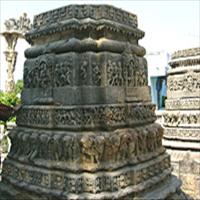 Siddhpur is a small town, around 115 kms from Ahemedabad, famous for its maternal manes. It has a Rudra Mahalaya temple which supposedly rested on 1600 pillars with 12 entrance doors and covered almost half of Siddhpur. Situated on the bank of river Saraswati, it is also famous as a pilgrimage centre of Hindus. The town is also known for beautiful Bohra houses, famous for its period style of architecture and marvellous carvings and glass paintings, which can be seen here.
Siddhpur is a small town, around 115 kms from Ahemedabad, famous for its maternal manes. It has a Rudra Mahalaya temple which supposedly rested on 1600 pillars with 12 entrance doors and covered almost half of Siddhpur. Situated on the bank of river Saraswati, it is also famous as a pilgrimage centre of Hindus. The town is also known for beautiful Bohra houses, famous for its period style of architecture and marvellous carvings and glass paintings, which can be seen here.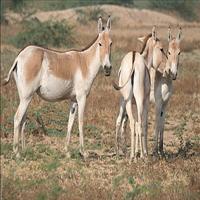 The Little Rann of Kutch is the most exciting place and probably comprising the largest wild life sanctuary in India. It is most famous for the extinct specie of the wild Ass, the last of India's wild horse family which does not survive elsewhere in Indian lowlands. The 4950 sq ft in area houses a range of habitats from saline desert plains to arid grasslands and from rocky and thorn scrub to lakes and marshes.\r\nAlong with the galloping herds of handsome chestnut brown wild Ass, the sanctuary houses a thriving population of gazelle, blue bull, wolf, and Indian foxes. Birds like the bustard, spotted & Indian sand grouse, desert wheatear, species of eagles and vultures along with the beautiful flamingoes, pelicans, ducks, cranes and storks frequent this sanctuary.\r\nOn the way to the Rann of Kutch, the 11th century historic walled town of Patdi with intricately carved temples is worth a visit.\r\nThe bird sanctuary of Nalsarovar, 40 kms from Ahemedabad is also worth a visit to watch the dances and frolics of the flaming flocks of Flamingoes and other birds.
The Little Rann of Kutch is the most exciting place and probably comprising the largest wild life sanctuary in India. It is most famous for the extinct specie of the wild Ass, the last of India's wild horse family which does not survive elsewhere in Indian lowlands. The 4950 sq ft in area houses a range of habitats from saline desert plains to arid grasslands and from rocky and thorn scrub to lakes and marshes.\r\nAlong with the galloping herds of handsome chestnut brown wild Ass, the sanctuary houses a thriving population of gazelle, blue bull, wolf, and Indian foxes. Birds like the bustard, spotted & Indian sand grouse, desert wheatear, species of eagles and vultures along with the beautiful flamingoes, pelicans, ducks, cranes and storks frequent this sanctuary.\r\nOn the way to the Rann of Kutch, the 11th century historic walled town of Patdi with intricately carved temples is worth a visit.\r\nThe bird sanctuary of Nalsarovar, 40 kms from Ahemedabad is also worth a visit to watch the dances and frolics of the flaming flocks of Flamingoes and other birds.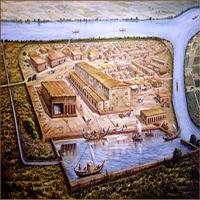 Lothal, the mount of the dead, is the most important excavated sites in the recent. This place which is hardly 90 kms from Ahemedabad, offers the view of neat structures those were built nearly 4000 years ago. One of the southernmost outposts of the Indus civilisation, and certainly one of the most interesting of Harrapan town planning, Lothal is the unique lock gated dockyard and perhaps the greatest maritime architecture of the ancient world.\r\nThe Harrappans arrived here in 2400 B.C. and Lothal developed as the most important port and a centre of the bead industry until 1900 BC when the great flood resulted in 300 years of decline. But even before that, knowing the potential of the fertility of the land and the bead trade, the Harrappans had raised huge colonies and settlements with all the amenities. A trip to Lothal gives an insight of the superb planning of people who lived nearly 4500 years back without the use of any technical device.
Lothal, the mount of the dead, is the most important excavated sites in the recent. This place which is hardly 90 kms from Ahemedabad, offers the view of neat structures those were built nearly 4000 years ago. One of the southernmost outposts of the Indus civilisation, and certainly one of the most interesting of Harrapan town planning, Lothal is the unique lock gated dockyard and perhaps the greatest maritime architecture of the ancient world.\r\nThe Harrappans arrived here in 2400 B.C. and Lothal developed as the most important port and a centre of the bead industry until 1900 BC when the great flood resulted in 300 years of decline. But even before that, knowing the potential of the fertility of the land and the bead trade, the Harrappans had raised huge colonies and settlements with all the amenities. A trip to Lothal gives an insight of the superb planning of people who lived nearly 4500 years back without the use of any technical device.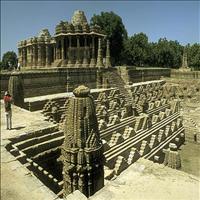 The 11th century Sun Temple of Modhera is one of the finest examples of the prosperous era of Gujarat during the rule of the Solanki dynasty. The temple is dedicated to the Sun God who stands high on a plinth overlooking a deep stone-steeped tank. The carvings on each inch of the edifice are intricate and rich with various figures and natural objects. With a step well and many shrines around of Shiva, Ganesha and Vishnu the Sun temple is comparatively small one. Hardly 80 kms from Ahemedabad its worth a visit.
The 11th century Sun Temple of Modhera is one of the finest examples of the prosperous era of Gujarat during the rule of the Solanki dynasty. The temple is dedicated to the Sun God who stands high on a plinth overlooking a deep stone-steeped tank. The carvings on each inch of the edifice are intricate and rich with various figures and natural objects. With a step well and many shrines around of Shiva, Ganesha and Vishnu the Sun temple is comparatively small one. Hardly 80 kms from Ahemedabad its worth a visit.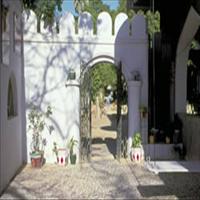 At Raiyoli, near Balasinore, is one of the 3 largest dinosaur sites of the world. Around 86 kms from Ahemedabad, experts believe Balasinore to be a major hatchery for dinosaurs nearly 65 million years ago.\r\nThis site, a treasure trove of fossils, unfolds the life of the dinosaurs which lived here. They must have been nearly 20 meters long. Numerous eggs too have been found here during excavations.\r\nThe geological studies of the region, have made the scientists believe this site to be the largest breeding grounds of the dinosaur which was destroyed by a meteorite and subsequently by volcanoes. This site is believed to be a part of the Shiva crater caused millions of years ago by a meteor from what is now eastern Gujarat to the coast off present day Bombay.
At Raiyoli, near Balasinore, is one of the 3 largest dinosaur sites of the world. Around 86 kms from Ahemedabad, experts believe Balasinore to be a major hatchery for dinosaurs nearly 65 million years ago.\r\nThis site, a treasure trove of fossils, unfolds the life of the dinosaurs which lived here. They must have been nearly 20 meters long. Numerous eggs too have been found here during excavations.\r\nThe geological studies of the region, have made the scientists believe this site to be the largest breeding grounds of the dinosaur which was destroyed by a meteorite and subsequently by volcanoes. This site is believed to be a part of the Shiva crater caused millions of years ago by a meteor from what is now eastern Gujarat to the coast off present day Bombay.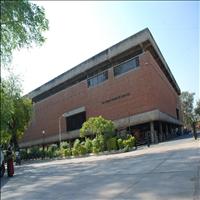 If you are an architecture student than you are in for a visual treat in this city. The Sanskar Kendra was built by none other than the renowned architect Le Corbusier himself in 1954 as a cultural center of Ahmedabad. Located near the Sardar bridge in the vicinity of the famous Tagore Hall, across the National Institude of Design it is a discerning example of modernist architecture.In order to preserve its architecture, and nurture a space of culture and community, the Vastu Shilpa Foundation has made efforts to revitalize and restore this space by starting a City Museum. This museum is aimed to celebrate the living heritage of the city and the pioneering spirit of its people. As Vastu Shilpa states, "To capture these nuances of the city of Ahmedabad, the museum is consciously conceived as a linear journey through overlapping and interconnected facets of city life ranging from art to industry, craft to culture, history to architecture, individual to institution." Also on display here are old relics, sculptures and the history of this city, informed by photographic, illustrated and textual panels. Sanskar Kendra also houses the famous Kite Museum designed by Bhanu Shah who has created a fascinating and striking collection of kites with a rare devotion since he was 21 years of age. This collection that gradually grew in range and repertoire is today showcased in the museum accompanied with interesting illustrations and photographs. The musuem needs some revision to connect with changing times, but it can still be worth a visit to a kite enthusiast.
If you are an architecture student than you are in for a visual treat in this city. The Sanskar Kendra was built by none other than the renowned architect Le Corbusier himself in 1954 as a cultural center of Ahmedabad. Located near the Sardar bridge in the vicinity of the famous Tagore Hall, across the National Institude of Design it is a discerning example of modernist architecture.In order to preserve its architecture, and nurture a space of culture and community, the Vastu Shilpa Foundation has made efforts to revitalize and restore this space by starting a City Museum. This museum is aimed to celebrate the living heritage of the city and the pioneering spirit of its people. As Vastu Shilpa states, "To capture these nuances of the city of Ahmedabad, the museum is consciously conceived as a linear journey through overlapping and interconnected facets of city life ranging from art to industry, craft to culture, history to architecture, individual to institution." Also on display here are old relics, sculptures and the history of this city, informed by photographic, illustrated and textual panels. Sanskar Kendra also houses the famous Kite Museum designed by Bhanu Shah who has created a fascinating and striking collection of kites with a rare devotion since he was 21 years of age. This collection that gradually grew in range and repertoire is today showcased in the museum accompanied with interesting illustrations and photographs. The musuem needs some revision to connect with changing times, but it can still be worth a visit to a kite enthusiast.Closed On: Monday
In many ways this museum is a tribute to the indefatigable spirit of the Gujarati women who have added remarkable value to the Gujarati heritage with their soulful crafts and unbound imagination. Displayed here the art forms range from varied communities such as the Kathi, Rabari, Ahir, Mer, Charan, Bharvad, Kanbi, Koli, Bhansali, Rajput, Brahmin, Vania, Meghaval, Khoja Bohra, Meman, Miana and several others. Also on exhibit are colorful works of embroidery, wood carving, metal work, bead work and utensils, leather work, costumes, paintings and animal decorations, objects of household usage. One can appreciate the care and discernment with which these objects have been collected. Photographic panels accompanied by textual description add value to the viewers experience and understanding of this wide collection. Kalpana Mangaldas Children's Museum (Performing Arts Museum) within the same premises houses a collection of puppets, dance and drama costumes, coins and a repository of recorded music from traditional shows from all over the world. One of the highlights at this museum is a complete elephant skeleton (3.19m high).
Closed On: Monday
Closed On: Monday
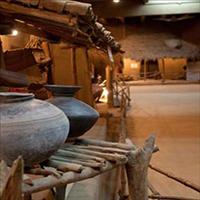 Situated at the Gujarat Vidyapeeth Tribal research and training aainstitute, Tribal Museum-One of the Most Famous Museums in Ahmedabad. Being established in 1962, the Tribal Museum gives a detailed picture of the tribal life of the region.Tribal museum contains different types of ethnological objects displayed includes ornaments, musical instruments, dress, day to day objects, agricultural implements, toys, masks and charts. The museum also has an excellent collection of photos, slides and films related to tribals. There is also a library inside the museum.
Situated at the Gujarat Vidyapeeth Tribal research and training aainstitute, Tribal Museum-One of the Most Famous Museums in Ahmedabad. Being established in 1962, the Tribal Museum gives a detailed picture of the tribal life of the region.Tribal museum contains different types of ethnological objects displayed includes ornaments, musical instruments, dress, day to day objects, agricultural implements, toys, masks and charts. The museum also has an excellent collection of photos, slides and films related to tribals. There is also a library inside the museum.Closed On: Sunday
Timings: Timings: 11:00 hrs to 17:30 hrs. Saturday: 11:00 hrs to 16:30 hrs.
GUJARAT & KARNATKA / PC-590 (17 Days / 16 Nights)
Mumbai-Ahmedabad-Khumbariya-Ambaji-Palanpur-Patan-Modhera-Ahmedabad-Lothal-Bhavnagar-Palitana-Bhavnagar-Mumbai-Hyderabad-Bengaluru-Chikmaglur-Mysore-Nagarhole-Bengaluru
Here in Gujarat you will discover centuries of history as spanning the geological core of the earth onto a fascinatingly vibrant future. Gujarat is unique in its geological and topographical landscape. From volcanic outpourings through bedrock to fossil fields of indigenous dinosaurs; from the art of the Neolithic cave painter to the stone masterpieces of a series of civilized architecture. Gujarat has it all. Ancient cave paintings to historic murals, natural and man made caves. Art, history, music, culture, all dovetail within each other to form a wondrous matrix that is the cultural exuberance of the people of the state. Karnataka situated on the southeast coast, mirroring the west, also rests snugly beneath a mountain range---the Eastern Ghats, sloping down to the Indian Ocean. Karnataka is a tapestry of colours, cultures, flavours, landscapes, timelessness and heart stopping beauty. A place where vibrant worlds seamlessly meld into one another every few hundred kilometers. Sedate plains suddenly rise to dizzying mist covered hilly heights, and then plunge with careless abandon in a white watered free fall to become languid rivers that flow past cities where time has stopped altogether, and cities where time rushes a relentless rush to keep up with the world; cities that sometimes escape into the deep quiet of thick forests and sometimes, stretches their arms wide open to embrace the sea.
Detailed Itinerary
Day 1 : Mumbai
Day 2 : Mumbai-Ahmedabad
Day 3 : Ahmedabad-Khumbariya-Ambaji-Palanpur
Day 4 : Palanpur-Patan-Modhera-Ahmedabad
Day 5 : Ahmedabad-Lothal-Bhavnagar
Day 6 : Bhavnagar-Palitana-Bhavnagar
Day 7 : Bhavnagar-Mumbai-Hyderabad
Day 8 : Hyderabad
Day 9 : Hyderabad-Bengaluru
Day 10 : Bengaluru-Chikmaglur
Day 11 : Chikmaglur
Day 12 : Chikmaglur-Mysore
Day 13 : Mysore
Day 14 : Mysore-Nagarhole
Day 15 : Nagarhole
Day 16 : Nagarhole
Day 17 : Nagarhole-Bengaluru
Mumbai-Ahmedabad-Khumbariya-Ambaji-Palanpur-Patan-Modhera-Ahmedabad-Lothal-Bhavnagar-Palitana-Bhavnagar-Mumbai-Hyderabad-Bengaluru-Chikmaglur-Mysore-Nagarhole-Bengaluru
Here in Gujarat you will discover centuries of history as spanning the geological core of the earth onto a fascinatingly vibrant future. Gujarat is unique in its geological and topographical landscape. From volcanic outpourings through bedrock to fossil fields of indigenous dinosaurs; from the art of the Neolithic cave painter to the stone masterpieces of a series of civilized architecture. Gujarat has it all. Ancient cave paintings to historic murals, natural and man made caves. Art, history, music, culture, all dovetail within each other to form a wondrous matrix that is the cultural exuberance of the people of the state. Karnataka situated on the southeast coast, mirroring the west, also rests snugly beneath a mountain range---the Eastern Ghats, sloping down to the Indian Ocean. Karnataka is a tapestry of colours, cultures, flavours, landscapes, timelessness and heart stopping beauty. A place where vibrant worlds seamlessly meld into one another every few hundred kilometers. Sedate plains suddenly rise to dizzying mist covered hilly heights, and then plunge with careless abandon in a white watered free fall to become languid rivers that flow past cities where time has stopped altogether, and cities where time rushes a relentless rush to keep up with the world; cities that sometimes escape into the deep quiet of thick forests and sometimes, stretches their arms wide open to embrace the sea.
Detailed Itinerary
Day 1 : Mumbai
Day 2 : Mumbai-Ahmedabad
Day 3 : Ahmedabad-Khumbariya-Ambaji-Palanpur
Day 4 : Palanpur-Patan-Modhera-Ahmedabad
Day 5 : Ahmedabad-Lothal-Bhavnagar
Day 6 : Bhavnagar-Palitana-Bhavnagar
Day 7 : Bhavnagar-Mumbai-Hyderabad
Day 8 : Hyderabad
Day 9 : Hyderabad-Bengaluru
Day 10 : Bengaluru-Chikmaglur
Day 11 : Chikmaglur
Day 12 : Chikmaglur-Mysore
Day 13 : Mysore
Day 14 : Mysore-Nagarhole
Day 15 : Nagarhole
Day 16 : Nagarhole
Day 17 : Nagarhole-Bengaluru
Splendors of West India / PI-0178 (12 Days / 11 Nights)
Mumbai-Vadodara-Chhota Udaipur-Vadodara-Ahmedabad-Poshina-Zainabad-Rann of kutch-Ahmedabad-Goa-Mumbai
Detailed Itinerary
Day 1 : Mumbai-Vadodara-Chhota Udaipur
Day 2 : Chhota Udaipur
Day 3 : Chhota Udaipur-Vadodara
Day 4 : Vadodara-Ahmedabad
Day 5 : Ahmedabad-Poshina
Day 6 : Poshina
Day 7 : Poshina-Zainabad
Day 8 : Zainabad-Rann of kutch
Day 9 : Rann of kutch-Ahmedabad
Day 10 : Ahmedabad-Goa
Day 11 : Goa
Day 12 : Goa-Mumbai
Mumbai-Vadodara-Chhota Udaipur-Vadodara-Ahmedabad-Poshina-Zainabad-Rann of kutch-Ahmedabad-Goa-Mumbai
Detailed Itinerary
Day 1 : Mumbai-Vadodara-Chhota Udaipur
Day 2 : Chhota Udaipur
Day 3 : Chhota Udaipur-Vadodara
Day 4 : Vadodara-Ahmedabad
Day 5 : Ahmedabad-Poshina
Day 6 : Poshina
Day 7 : Poshina-Zainabad
Day 8 : Zainabad-Rann of kutch
Day 9 : Rann of kutch-Ahmedabad
Day 10 : Ahmedabad-Goa
Day 11 : Goa
Day 12 : Goa-Mumbai
Ahmedabad, India Tours

